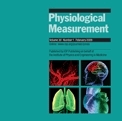Publications

Can mechanical myotonometry or electromyography be used for the prediction of intramuscular pressure?
Authors: R.K. Korhonen, A. Vain, E. Vanninen, R. Viir, J. S. Jurvelin
Affiliations: Department of Applied Physics, University of Kuopio, Finland
Journal: Physiological Measurement - October 2005, Volume 26 (DOI: 10.1088/0967-3334/26/6/006)
-
Field & Applications:
- Medical
- Musculoskeletal rehabilitation
The aim of the study was to characterize the electromechanical properties of skeletal muscle during isometric loading as well as to assess the potential of estimating intramuscular pressure by electrical and mechanical methods. Simultaneous electromyography (EMG), mechanical myotonometry (MYO, frequency and decrement of decay) and intramuscular pressure (IMP) measurements were conducted at rest and during short-term and long-term isometric contractions in patients with chronic pain in the anterior leg or dorsal forearm. The EMG amplitude and MYOfreq accounted significantly (24–73%, p < 0.0001) for the variations in the IMP under short-term isometric loading. The IMP, EMG and MYOfreq increased linearly with the relative muscle load (r = 0.868–0.993, p < 0.05). Mean values of EMG amplitudes at the contraction levels of 75% and 100% maximum voluntary contraction (MVC) and MYOfreq values at all contraction levels (0–100% MVC) were higher for subjects with pathological values of IMP than for those with IMP values in the normal range. Total changes in IMP and EMG amplitude during 1 min isometric contraction were linearly interrelated (r = 0.747, p < 0.0001). We conclude that both surface electromyography and myotonometry parameters are indicative of intramuscular pressure, but neither of these methods can be used alone to diagnose non-invasively chronic compartment syndrome with acceptable accuracy.
We conclude that both surface electromyography and myotonometry parameters are indicative of intramuscular pressure, but neither of these methods can be used alone to diagnose non-invasively chronic compartment syndrome with acceptable accuracy.


